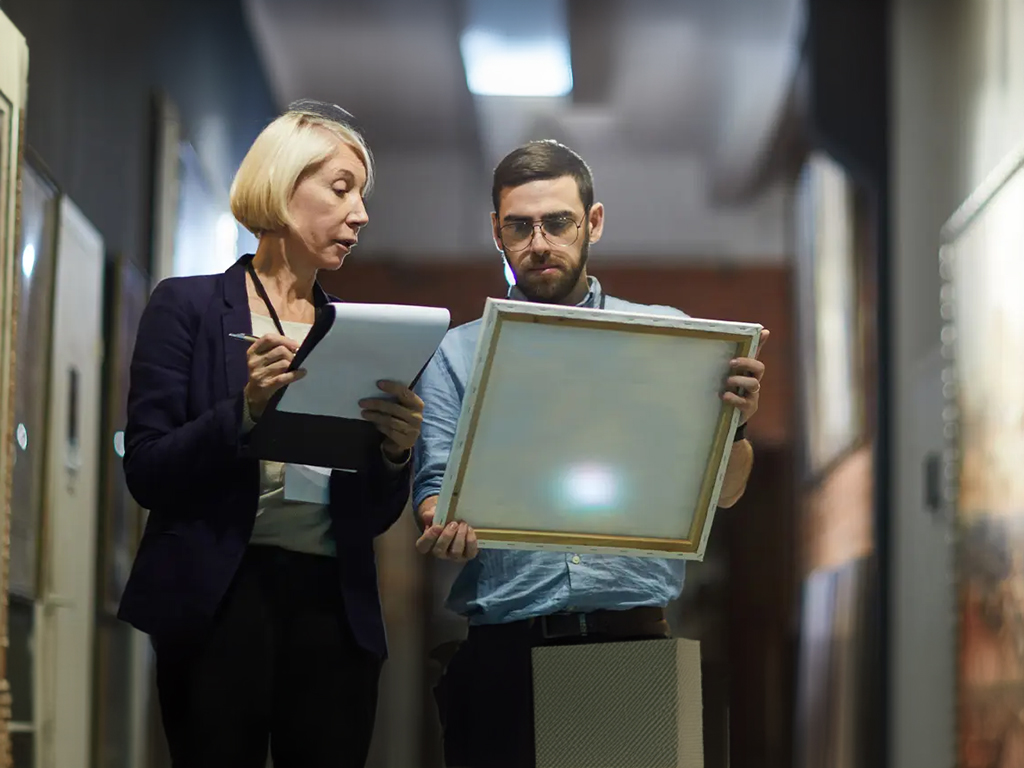When it comes to art investing, however, there are more solid lines that can be drawn, as the value of an artwork is determined by the market. If you are planning to invest in art, or just looking at what options might be available to you, it’s important to learn how you go about evaluating an artwork before buying.
Step One: Learn About the Artist
The artist themselves will be the biggest driving factor in the value of any given artwork. Name recognition is vital to resale value, and learning about who the artist is can help you evaluate an artwork in a few different ways.
Of course, “blue chip” artists like Andy Warhol or Damien Hirst have a solid level of fame and steadily rising sales prices, enough to almost guarantee the value of any work going forward. This level of steady value is extremely rare, however. For most artists, take a look at their background – are they already established? Can you find records of exhibitions, and evidence of their work being sold on the primary and/or secondary markets? This can indicate a demand from buyers, reinforcing the value of the work.
If an artist is at the emerging or early-career stage, this should be reflected in the price. These can be great investments, especially if the artist has success later on, but as this is hard to predict, the budget for these works should be lower.
Step Two: Consider the Context
The context of the artwork within the artist’s overall practice is also important. Certain artworks will be in higher demand than others, even for highly collected artists. If an artist is well known for a particular style or content, then works that fit within this range will most likely still be in demand further down the road. Other, more unusual works by the artist might also be in demand, but this is less guaranteed.
If you are uncertain, look for a ‘series’ or ‘period’ in an artist’s work that has identifiable success in the market, such as Bob Dylan’s ‘Drawn Blank’ series. If there are collectors for works from this series, this suggests a more reliable value than works that do not have buyers waiting.
Step Three: Take Medium Into Account
The medium of an artwork can affect its value to a certain extent, with paintings and sculptures usually priced more highly than a drawing or print. This is after the artist is taken into account, of course – a rough sketch by Picasso or a print by Stan Lee will be worth more than a vast oil painting by an unknown artist.
The rarity of the piece should also be considered, if it is not an original artwork. Reproduction prints can have investment value, and in fact often mean a more accessible option for those who cannot purchase high-priced original work. However, a limited edition run with fewer numbers is better than a large edition. By contrast, an open or unnumbered edition is rarely worth much, as these can be reproduced without limit.
Step Three: Look at the Price
You can compare prices of the work you are considering to other works by the same artist. If it is significantly lower or higher than others that seem similar, take a pause to consider why this might be the case. If the price is too low, there might be something questionable about the artwork’s authenticity or quality – see more on that below. If the price seems very high, there might have recently been a spike of interest in the artist’s work, but the seller simply might be trying to get more than the artwork is worth.
It’s also a good idea to consider who is setting the price. Artworks on the primary market have their prices set by galleries or even the artists themselves. While they may be perfectly accurate, they might also be inflated; secondary market prices are often a more direct reflection of an artwork’s value. As a result, you can often find artwork for a much more competitive price on the secondary market.
Step Four: Check Current Trends
The art market is large and often difficult to quantify, especially with so many different genres and styles of work on offer. However, you can look up trends that relate to the genre and style of art that you are considering. This is a good time to look for expert advice, as an art market professional will generally have a clearer idea of long-term art trends than can be gleaned from a google search.
Step Five: Note Condition and Quality
If an artwork is damaged at all, this will naturally affect the price. This is something to be particularly aware of when buying on the secondary market, as the artwork will have had at least one owner; the seller should provide details of any damage before the purchase takes place.
Step Six: Ensure Authenticity
All artworks should have some level of documentation to prove they were created by the credited artist. This is crucial if you are purchasing an artwork on the secondary market; there should be a certificate of authenticity, record of sale, or some other type of provenance, including proof that the seller owns the artwork themselves and has a right to sell it.
With some artworks, proving authenticity can be more difficult, especially if the current owner did not purchase the work from a gallery. Many artists have a catalogue raisonné, which is a verified list of the artist’s works. Street artists such as Banksy and Stik often provide a catalogue raisonné for collectors to cross-check their artworks.
Step Seven: Ask for Advice
While many of the steps above can be completed on your own, an art market professional will always make things smoother and easier, from researching an artist’s history to predicting sales trends.





